Dutch Baby Pancakes Recipe: A Simple Guide to Perfect Fluffy Pancakes

Dutch baby pancakes are a delightful and impressive breakfast treat. This baked pancake is known for its dramatic puff and tender texture. I find it fascinating how a simple blend of eggs, flour, milk, and sugar transforms in the oven.
One of the best things about making these pancakes is that they require minimal preparation time. In just 25 minutes, you can have a warm, golden pancake ready to serve. The signature puffiness comes from baking at a high temperature, which is key to achieving the perfect rise. This unique pancake is versatile enough to enjoy with a variety of toppings, from fresh fruit to classic maple syrup.
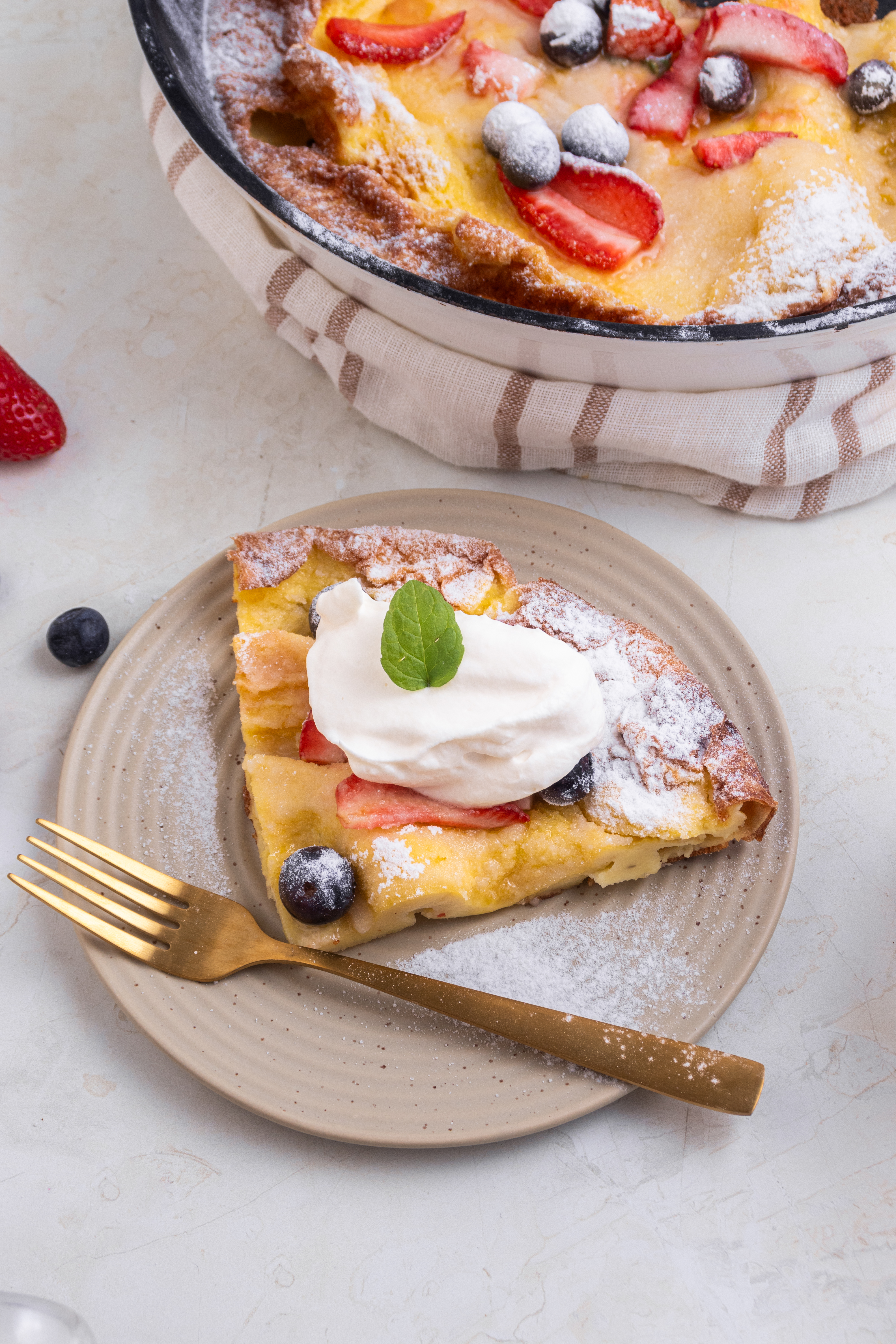
Why You Will Love This Dutch Baby Pancakes Recipe
I find Dutch Baby Pancakes to be a delightful breakfast or brunch dish with their golden, crispy edges and soft, custard-like center. The contrast is amazing and makes a perfect start to the day.
One reason to love Dutch babies is their versatility. Whether you enjoy them plain or topped with fresh fruit, powdered sugar, or a drizzle of maple syrup, there is no shortage of options to satisfy your taste. They suit both sweet and savory preferences.
As a brunch dish, these pancakes are great for entertaining. Serving them straight from the oven makes an impressive presentation. The way they rise like popovers in the oven is sure to wow your guests.
The texture is similar to popovers, offering a light and airy experience. Unlike regular pancakes, Dutch babies are baked, so there’s no need to stand over the stove flipping pancakes. This means more time for me to relax or focus on other dishes.
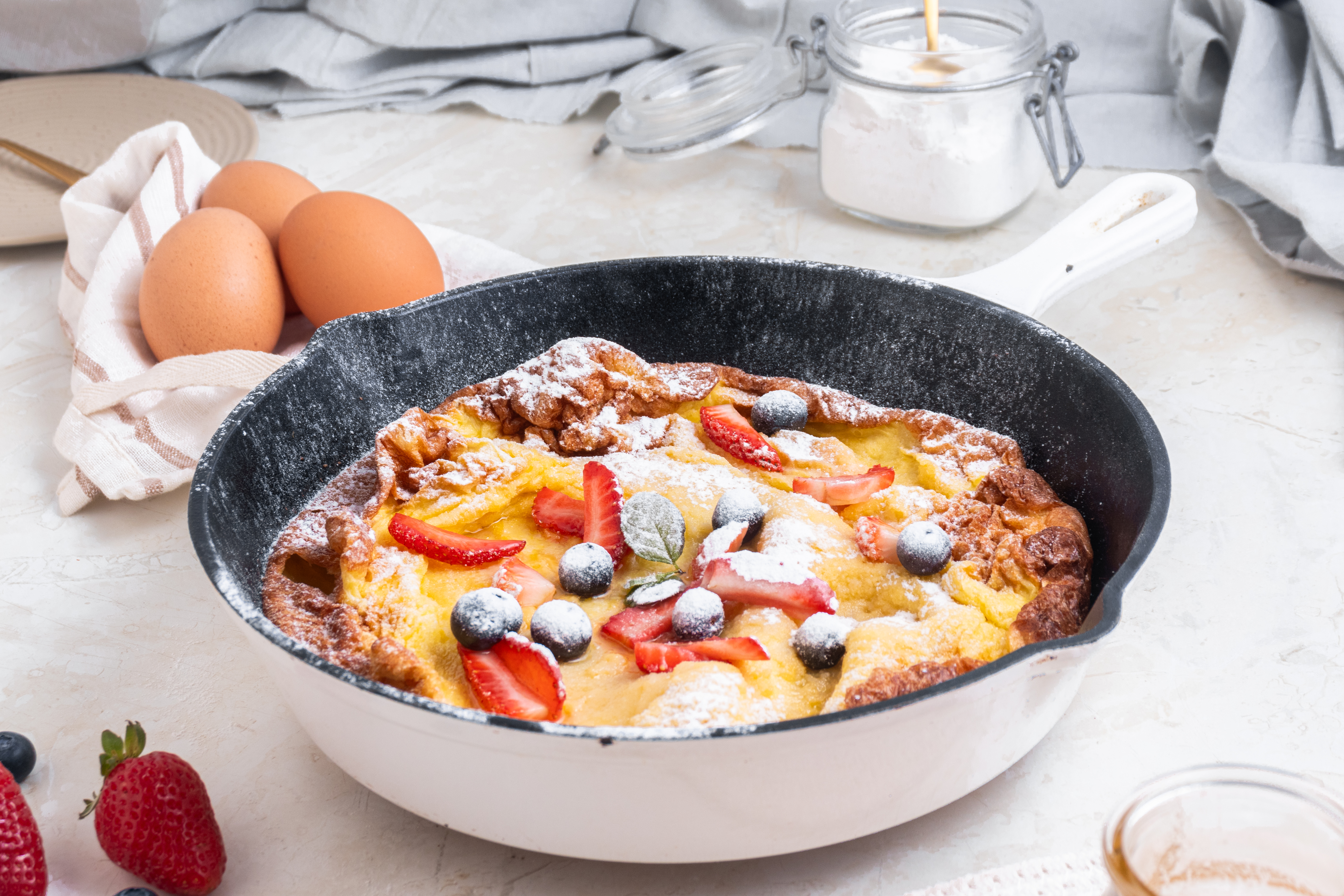
How To Make Perfect Dutch Baby Pancakes
To make the perfect Dutch baby pancake, I start by preheating my oven to 220°C (425°F). This step is essential because the high temperature helps the pancake puff beautifully.
In a large bowl, I whisk together these key ingredients:
- 3 large eggs
- ½ cup all-purpose flour
- ½ cup whole milk (or 2% milk)
- 1 tablespoon granulated sugar
- ¼ teaspoon salt
The batter should be smooth and thin, almost like crepe batter.

While the batter rests, I place a skillet on the stovetop and melt 2 tablespoons of unsalted butter. It’s important to swirl the butter, so it coats the bottom and sides of the skillet.
Once the butter has melted, I transfer the skillet to the preheated oven for about 5 minutes. This step lets the butter heat up but not burn.
Carefully removing the hot skillet from the oven, I pour the batter in. The butter will bubble around the edges, and that’s a good sign.
I bake the Dutch baby pancake for 12-15 minutes until the edges are golden and the center is puffed. Watching it rise in the oven is always exciting!
When done, I serve my Dutch baby immediately. While it’s warm and fluffy, I might sprinkle some powdered sugar or add fresh fruits on top.
A few tips:
- Don’t overmix the batter, a few lumps are fine.
- Use a cast iron skillet if possible. It’s great for holding the heat.
- Serve it hot for the best taste and texture.
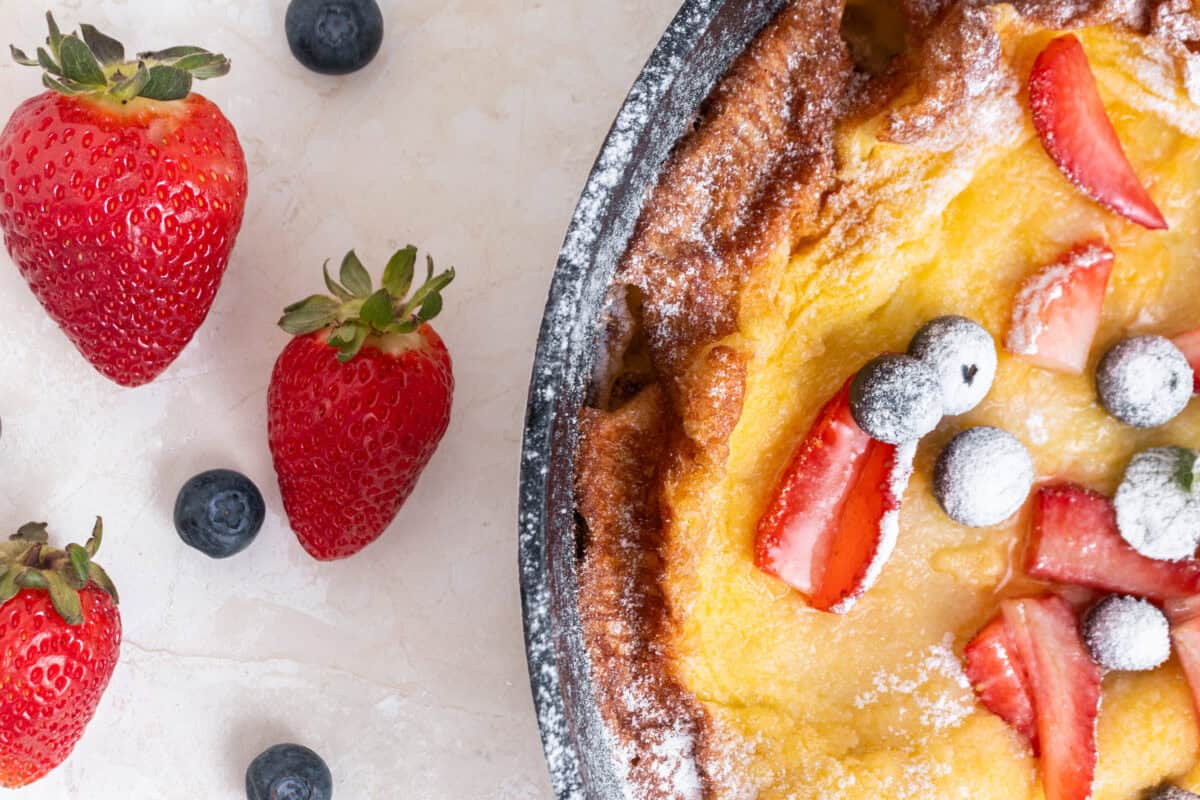
Key Ingredients And Substitutions
Eggs: I use large eggs to get a fluffy texture. If large eggs are unavailable, I can substitute with medium eggs, but I’ll use an extra one for similar results.
Flour: All-purpose flour is my go-to choice. For a heartier pancake, using whole wheat flour works, but it changes the taste slightly.
Milk: Whole milk gives a rich flavor, but if I need a lighter option, 2% milk can be used instead. For a non-dairy version, almond milk or oat milk can be used, but these might alter the flavor and texture.
Butter: Unsalted butter is ideal for controlling the salt content. If necessary, I might use salted butter and reduce the added salt.
Sugar and Salt: Granulated sugar provides some sweetness without overpowering the dish. I use a small amount of kosher salt to enhance all the other flavors.
Vanilla Extract: This adds a comforting aroma. If I ever run out, I consider trying almond extract for a different twist.
Toppings: A Dutch baby is versatile. I love adding maple syrup, berries, or nuts for sweetness. For savory options, smoked salmon or fresh chives create a delicious contrast. Sometimes I dust it with powdered sugar or drizzle with lemon juice for a fresh taste.
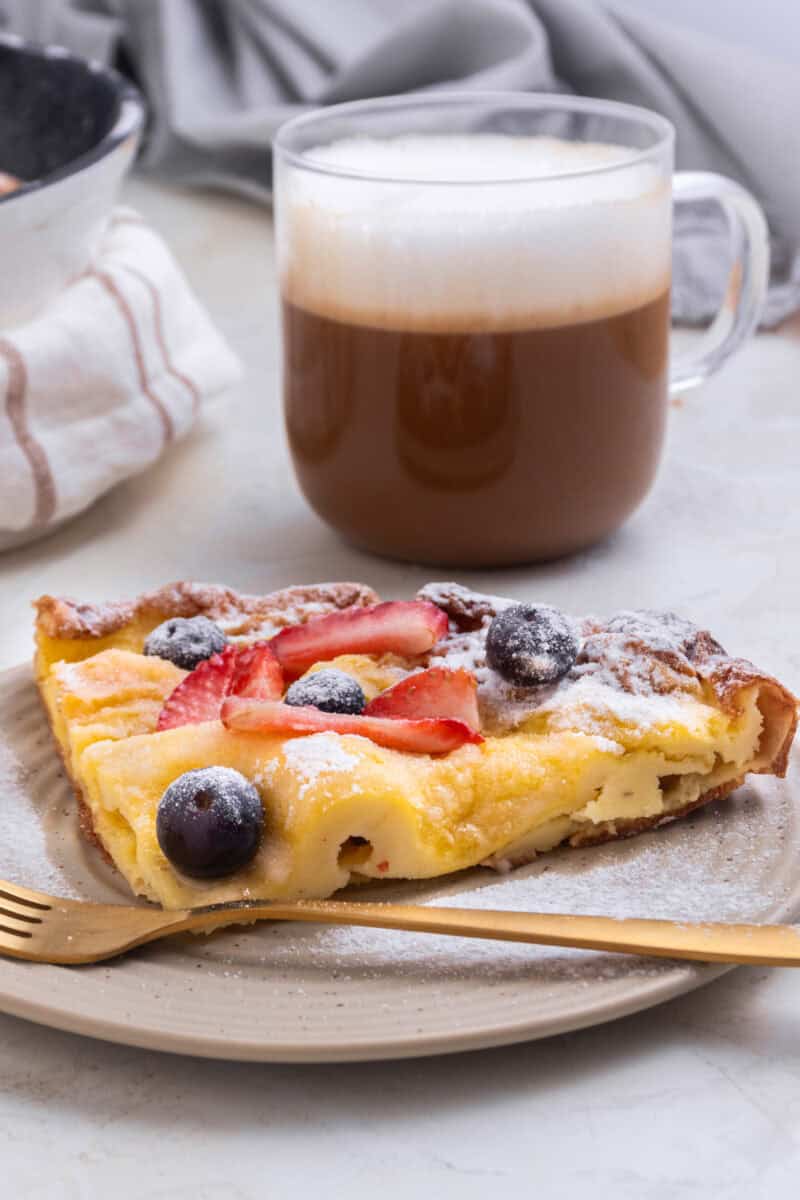
Frequently Asked Questions
I’m here to help answer some common questions about making Dutch Baby pancakes. These are delicious and versatile treats that look and taste impressive but are quite easy to make. Let’s dive into the details that can help you perfect this dish.
How do I make a simple Dutch Baby pancake recipe?
To make a simple Dutch Baby, I use eggs, flour, milk, sugar, and salt. I preheat a cast iron skillet in a hot oven, add melted butter, then pour in the batter. The high temperature and preheating are key for getting that classic puff.
What can I use if I don’t have a cast iron skillet for a Dutch Baby pancake?
If I don’t have a cast iron skillet, any oven-safe skillet will do. It’s important that the skillet can withstand high temperatures and distribute heat evenly, helping the Dutch Baby rise and cook properly.
What are the differences between Dutch Baby pancakes and traditional pancakes?
Dutch Baby pancakes and traditional pancakes differ in texture and cooking method. Dutch Babies puff up impressively in the oven, similar to Yorkshire puddings, while standard pancakes are cooked on a stovetop and resemble thicker crepes.
Why might a Dutch Baby pancake fail to puff up in the oven?
A Dutch Baby might not puff up if my oven or skillet isn’t hot enough. It’s also crucial to use room temperature ingredients. Preheating both the oven and skillet is essential for the dramatic rise.
Can I create a savory Dutch Baby pancake, and if so, how?
Yes, I can make a savory Dutch Baby by skipping the sugar and adding ingredients like herbs, cheese, or cooked vegetables to the batter. These toppings turn it into a delightful dish perfect for brunch or dinner.
How does the number of eggs affect a Dutch Baby pancake recipe?
The eggs in a Dutch Baby give it structure and lift. More eggs can lead to a richer, airier pancake. This makes it similar to a popover or German pancake.
Balancing eggs with other ingredients is key to achieving the desired texture.
Dutch Baby Pancake
Equipment
- 1 Cast Iron Skillet
Ingredients
- 3 eggs
- 1/2 cup flour all-purpose
- 1/2 cup milk
- 1 tbsp sugar
- 1/4 tsp salt
- 2 tbsp butter unsalted
Instructions
- Preheat oven to 425F.
- In a large bowl whisk eggs, flour, milk, sugar, and salt until smooth.
- Place the skillet on the stovetop. Add unsalted butter and melt it, swirling to coat the bottom and sides of the skillet.
- When the butter is melted, transfer the skillet (including the melted butter_ to the preheated oven. Heat for another five minutes. Watch so that the butter does not burn.
- Using oven mitts, carefully remove the hot skillet from the oven. Pour the batter into the preheated skillet with the melted butter. The butter should bubble at the edges. Remember a high temperature is essential to this recipe.
- Bake the Dutch baby for 12-15 minutes, or until the edges are golden brown and the center is puffed and almost set.
- Remove the Dutch baby from the oven and serve it immediately while it's still puffed and fluffy. The center may sink a bit as it cools down. Add toppings like maples syrup, fresh fruit, whip cream, pecans and more!
Nutrition


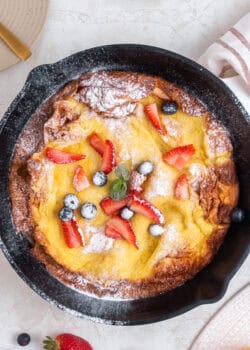
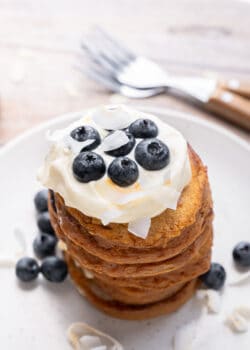




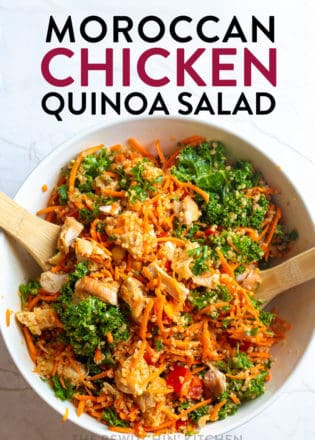


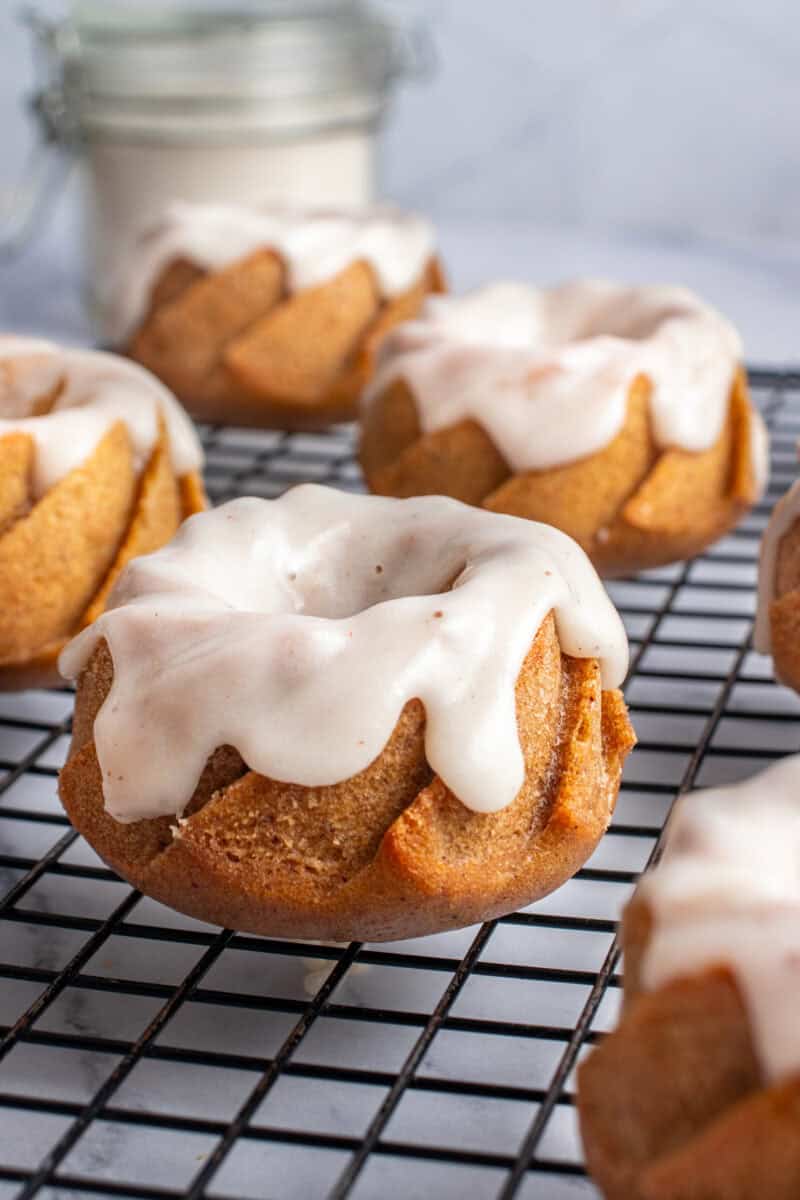


An exceptionally delectable and visually appealing cake, accompanied with numerous preparation methods, advice for its creation, and an analysis of its advantages and disadvantages. Exceedingly pleasant.
Looks yummy!! I am going to make it.
This cake is on my menu now.
I can’t give you exact measurements since we didn’t test it with that size, but you can adjust the servings on the recipe from 4 to 6 and it will change the ingredient measurements to reflect that. 6 servings should be more appropriate for a 12 inch pan.